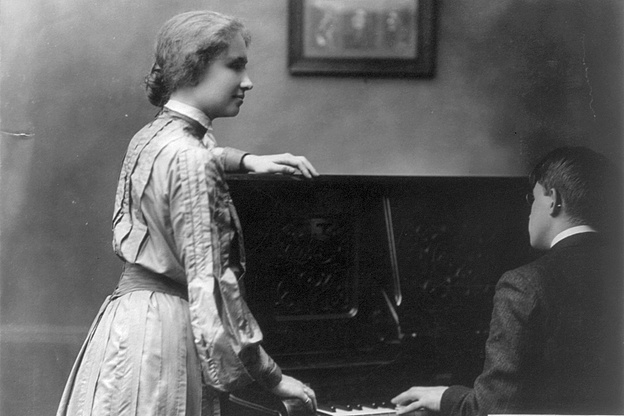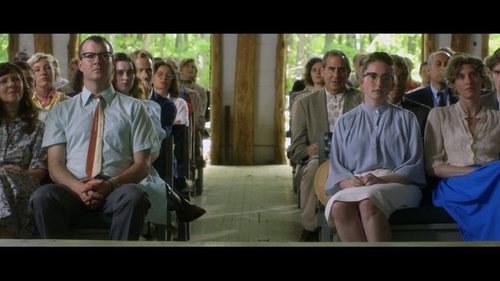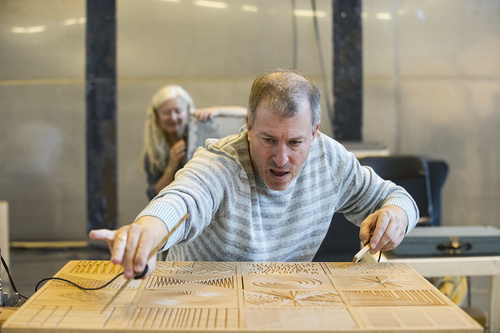
Initially written after the first workshop at Al Amal School for the Deaf (Sharjah Biennial 11), this text has been regularly updated throughout the many occasions of the Infinite Ear and last updated in March 2018.1 Starting by describing how individuals have been hierarchized by the modern conception of hearing, the text proposes several transformations that have been experimented in the inquiry.
On hearing knowledge
During the seventeenth century, the science of otology (the study of the ear) developed in parallel with early modern philosophical conceptions of the ear as an “episteme,” or site for knowledge production and selfhood. In Reason and Resonance, musicologist Veit Erlmann traces how “[René] Descartes’ philosophy enacts an uneasy truce between entendre, hearing, and entendre, understanding.” 2 It is not surprising, then, to note that the word “dumb” also has two meanings: mute and stupid.
Part of the five senses canon, hearing, auditory perception, or audition, is usually understood as the ability to perceive sound by detecting mechanical waves — known as vibrations — through an organ such as the ear, which are then transduced into nerve impulses processed by the brain. (In this way, sound can be understood as a biological imaginary.) Human hearing range encompasses frequencies of 2 Hz to 20 kHz, whereas dogs, cats and dolphins can perceive ultrasound up to 45.65 and 500 kHz. The World Health Organization considers that 5% of the world’s population has “mild” deafness (i.e., difficulty listening to a conversation). Indeed, this register of hearing distributes beings hierarchically, according to a scale of ability, and consequently, “profoundly” deaf people, who supposedly hear no sound at all, are located at the edges of this hierarchy. From this perspective, “disabled” person need prosthetics to reach this norm. 3
Begun in 2013 as a research project about deaf persons’ perception of sound, Infinite Ear approaches profound deafness — a hearing condition ostracized by modern conceptions of hearing — as both an ability (or even expertise) and a starting point from which an alternative to the phonocentric natural history of hearing might be established. To what extent do we hear? What can Hearing and Deaf people learn from each other’s “differently-abled” auditory abilities? Beyond human beings, how might practices in para-hearing — whether biological or technical entities — proffer more complex formulations of listening and hearing, extending these notions beyond audition? In what ways can such knowledge improve political representation of the diversity of hearing?

Alison O'Daniel, The Tuba Thieves, scenes 5, 6, 60: Hearing 4’33”, HD video, 9'52'', 2013–ongoing. In the scene Pianist David Tudor performs John Cage’s famous “silent” music piece 4’33” at the Maverick Concert Hall in Woodstock, NY. An irritated man leaves the concert and walks through the woods nearby.
Transformation in Modern Hearing
Infinite Ear considers practices of un- or para-hearing entities, both biological and technical, that exceed, extend or modulate the modern conception of hearing. This follows from Stefan Helmreich and Michele Friedner’s essay on disciplinary intersections seeking to “prompt scholars in Sound studies and Deaf studies into new conversation,” 4 in order to investigate how sound is inferred in deaf (and Deaf) practice; how seismic communication (sound perceived in the register of low-frequency and vibration) can upend deaf/ hearing dichotomies 5; how the anticipation of sound creates a form of environmental awareness 6; how “deaf futurists” champion cyborg sound; how space could be rearranged from a deaf perspective; how paracusia (a form of hallucination that involves perceiving sounds without auditory stimulus) is experienced beyond the hierarchy of hearing abilities; and how non-speech-based communicative practices, like signing and active listening, might unwind phonocentric models of speech and thereby move us away from exclusively speech-oriented communities 7.

Tarek Atoui, Iterations on drums, part of WITHIN, 2016. Iterations on Drums is a set of four percussion tables that focus on conducting sound through solid materials such as metal and wood rather than air. This way, the sound they produce is felt in the hands of the player before reaching his/ her ears. The series was produced on the occasion of the Bergen Assembly 2016.
These investigations offer new insights into the traditional separation of the senses, and their boundaries, by revealing specific articulations within sensory ecosystems that imbricate more than the five senses. In oscillating between solitary to social operations of the mind, these perspectives on hearing might draw different registers of selfhood, as well as heightened awareness of the sonic environment.
These perspectives may be contradictory. Rather than seeking a single description of hearing, Infinite Ear creates a space 8 in which these different perspectives can coexist — a space of composition but also of conflict is a necessary condition for experimenting the common.
TEXT by
- Grégory Castéra
In conversation with
- Tarek Atoui
- Francesca Bertolotti-Bailey
- Emma McCormick-Goodhart
- Sandra Terdjman
Image: Hellen Keller touching a piano. Helen Adams Keller (June 27, 1880 – June 1, 1968) was an American author, political activist, and lecturer. She was the first deaf-blind person to earn a bachelor of arts degree.